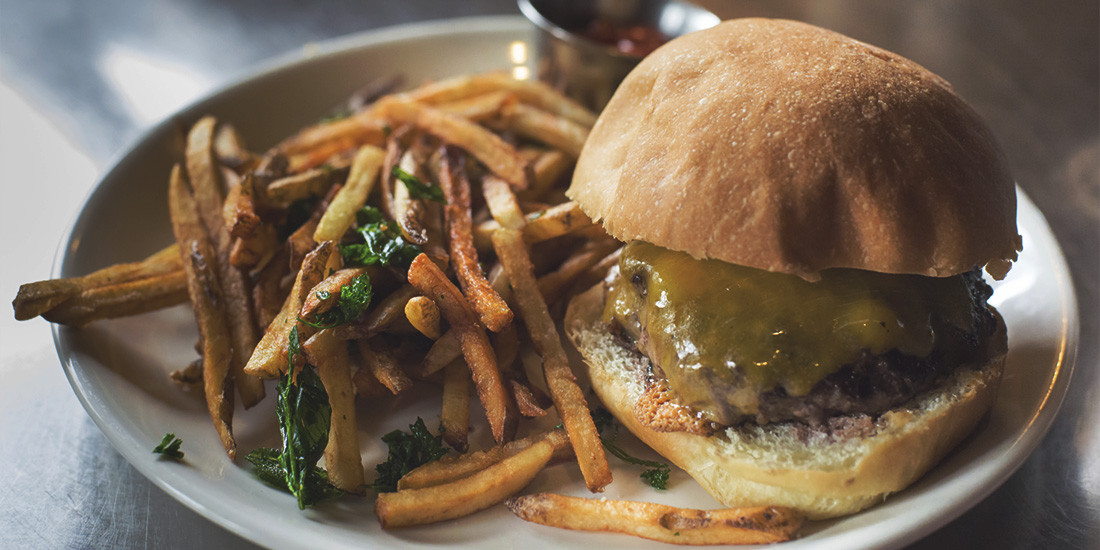

The Grocer: Umami
If you’ve ever sat down to mum’s spaghetti bolognese and mechanically sprinkled on lashings of parmesan cheese or happily added an extra smothering of tomato sauce to your cheesy double-patty burger, these motions may not be come down to preferred taste, but instinctual eating built in to the taste receptors sitting pretty on your pink tongue. In Australia, we grew up recognising four types of taste – sweet, sour, bitter and salty. But there is a fifth taste also worthy of attention, umami.
A loanword from Japanese language, umami can be broken down into ‘umai’ meaning delicious and ‘mi’ meaning taste, with ‘umami’ translating to pleasant savoury taste. This fifth taste was first proposed in 1908 by chemist Professor Kikunae Ikeda at Tokyo University, but it has only more recently found its way into Western dialects. By 1901, Kikunae had drawn a map of the tongue, unravelling the whereabouts of the nerve endings that identify the four primary tastes. But for asparagus, tomatoes, meats, cheese and mushrooms, a different set of taste receptors were activated.
Professor Ikeda had identified that this ‘deliciousness’ contained within certain foodstuffs was strongest in dashi – the rich Japanese stock made from kombu (kelp) and used in ramen. Kombu contains glutamic acid – an amino acid that is both produced by the human body and is naturally present in many foodstuffs. When dried kombu is boiled, the glutamic acid becomes glutamate. And it is glutamate (along with a group of chemicals called ribonucleotides that also occur naturally in foods) that is the source of this certain ‘deliciousness’ known as umami. And when you pair multiple umami-rich ingredients in a single dish, each flavour further enhances the next, making certain meals mouthwatering.
Strong broths and soups, slow-cooked stews, hearty meats, Worcestershire sauce, anchovies, shrimp, tomatoes, cheese and wild mushrooms are all replete with glutamate, which explains our mouthwatering desire for pastas or lasagne (tomato plus meat) dowsed in parmesan cheese. Cured or aged meats are also rich in this savoury taste, with fermentation also releasing glutamate – think pickles, soy sauce and cheese. Ingredients need to be cooked or fermented to release the amino acid – meaning raw dishes won’t have the same tongue-stimulating effects (sorry raw eaters). Surprisingly, human milk is one of the highest glutamate-containing mammalian milks – the combination of sugar and umami perhaps explaining why it can be difficult to wean babies off the breast.
Professor Ikeda saw his original discovery as an opportunity to mass produce glutamate by mixing it with water and salt and packaging it up into pantry-friendly containers to be added to any foods, creating monosodium glutamate or the notorious MSG. While we’re by no means suggesting you should artificially add MSG to your meals to make each one an intoxicating flavour experience, you’ll now be more aware of the naturally occurring glutamates in everyday meats, vegetables and preserved foods and why certain meals are so seductive.
In simple terms – if you’ve been finding yourself a burger fiend of late, umami could be cause. A cheeseburger topped with squiggles of tomato sauce, layers of melted cheese and pickles signals all sorts of joy and happiness in the brain. Vegemite is also rich in umami – keep a little jar in your desk drawer for an emergency happiness pick-me-up slice of toast.
The Stumble Guide is our comprehensive Brisbane dining guide with more than 2400 places to eat, drink, shop and play.




